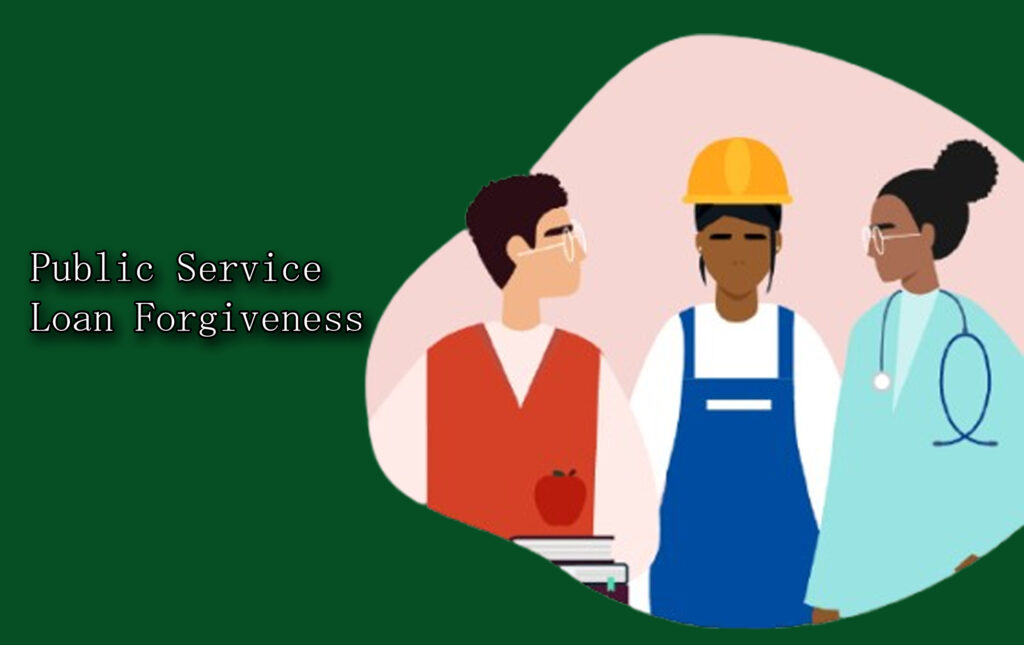Public Service Loan Forgiveness – If you work in a government or nonprofit job and have student loans, you might be able to get some of your debt forgiven.

The Public Service Loan Forgiveness (PSLF) program was created to help people who serve the public by canceling the rest of their federal student loans after a certain number of payments.
It can be a big help, but there are rules you need to follow to qualify. What are they? Stick with us to find out.
What Is Public Service Loan Forgiveness?
Public Service Loan Forgiveness is a program started in 2007 by the U.S. Department of Education. It helps people who work in public service jobs by canceling the rest of their federal student loan balance after they make 120 monthly payments; that’s about 10 years of payments.
This program is only for federal student loans, and only if you meet certain rules. It’s not automatic. You have to apply and prove that you followed all the steps.
Who Qualifies for PSLF?
Not everyone qualifies, but many people do without realizing it. You can qualify if you:
- Work full-time for a government organization, such as a city, state, or federal agency.
- Work for a nonprofit that is tax-exempt under Section 501(c).
- Work for some nonprofit organizations that provide public services, even if they are not tax-exempt.
- Serve in the military or work for a public school, university, or hospital.
It doesn’t matter what your job title is; as long as your employer qualifies, you can be eligible.
For example, a janitor at a public school or a secretary at a city hall may qualify, just like a teacher or a police officer.
What Kind of Loans Are Eligible?
Only Direct Loans from the federal government qualify for PSLF. If you have other types of loans, like FFEL or Perkins Loans, they do not qualify unless you combine them into a Direct Consolidation Loan.
To check what kind of loans you have, log in to your account at StudentAid.gov. If you’re not sure, a loan servicer can help.
What Kind of Repayment Plans Count?
To get forgiveness, you must make 120 monthly payments under a qualifying repayment plan. These include:
- Income-Driven Repayment Plans, such as IBR, PAYE, REPAYE, and ICR
- These plans lower your monthly payment based on how much you earn.
Standard 10-year repayment plans also count, but if you stay on this plan, you may finish paying off your loan before you reach 120 payments. That’s why most people use an income-driven plan.
Your payments must also be
- Made on time
- For the full monthly amount
- Made while working for a qualifying employer
Steps to Get Public Service Loan Forgiveness
Be Sure You Have the Right Job
First, check if your employer qualifies. You can use the PSLF Help Tool at StudentAid.gov to confirm this. If you’re unsure, ask your HR department if your organization is a qualifying public service employer.
Switch to a Direct Loan (if needed).
If you don’t have a Direct Loan, you’ll need to consolidate your loans into a Direct Consolidation Loan. Only payments made after consolidation count.
Enroll in an Income-Driven Repayment Plan.
These plans usually offer the lowest monthly payment, and they qualify for PSLF.
Submit the Employment Certification Form.
You should send this form at least once a year or whenever you change jobs. It helps track your progress toward forgiveness. This step is very important.
Make 120 Qualifying Payments
This takes at least 10 years. You don’t need to make the payments in a row, but they must all be while you are working full-time for a qualifying employer.
Apply for Forgiveness
Once you’ve made all 120 payments, submit the PSLF application to have the rest of your loan forgiven. You will no longer need to pay the remaining balance if approved.
Common Mistakes to Avoid
Many people lose out on PSLF because of small mistakes. Here’s what to watch for:
- Not certifying employment every year
- Paying under the wrong plan
- Having the wrong loan type
- Switching to a non-qualifying job midway
- Missing payments or paying late
Always keep copies of your forms and payment history. Contact your loan servicer regularly to check your progress.
Changes and Temporary Fixes
The government sometimes makes temporary changes to help more people qualify. For example, the Limited PSLF Waiver allowed borrowers to get credit for past payments that normally wouldn’t count.
There’s also the Income-Driven Repayment (IDR) account adjustment, which may give you extra credit toward forgiveness.
So, be sure to check the Department of Education website often for updates or new programs.
Is It Worth It?
If you qualify, PSLF can save you a lot of money. After 10 years of payments, you could have the rest of your loan wiped out.
That’s a huge relief for many people who want to serve the public without being crushed by student debt.
Final Thoughts
Public Service Loan Forgiveness is one of the best student loan relief options out there, but it takes patience and attention to detail.
Make sure you have the right job, the right loan, and the right payment plan. Stay organized, submit your forms every year, and don’t miss payments.
If you stick with it, you could be debt-free after 10 years of service, and that’s a goal worth working toward.



